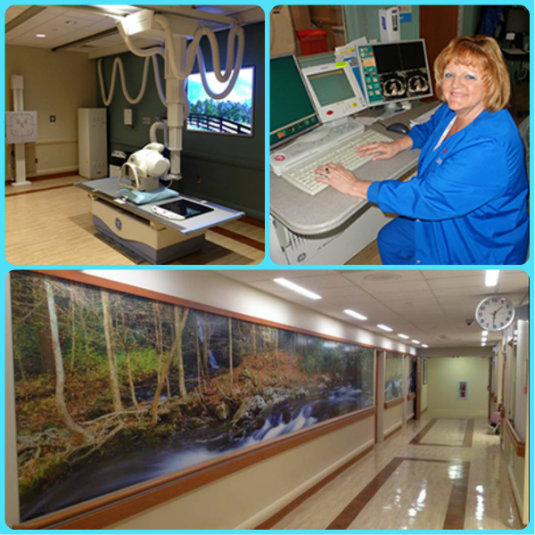The restaurant analogy fit perfectly as Verlon Salley discussed the three-year Radiology renovation project at UPMC Presbyterian and how the work has involved more than equipment installations, bricks and mortar.
“A restaurant that remodels and reopens with a new kitchen and décor will ultimately fail if the staff provides subpar customer service,” said Salley, executive director of Imaging, UPMC Presbyterian Shadyside.
“We can’t be that restaurant. Our customer service has to be excellent and reflect the state-of-the-art equipment, new procedure suites, renovated work areas, and other outstanding improvements we have made to our department,” Salley explained.
To make that happen, Salley introduced his staff about a year ago to a customer service tool called AIDET — an acronym for Acknowledge, Introduce, Duration, Explain, and Thank you.
Since then, Press Ganey scores in the Test or Treatment section, where patients rate staff on friendliness, skill, level of concern for patient comfort, and other criteria, have increased for Imaging Services on both campuses.
 To get the ball rolling, small focus groups of technologists at UPMC Presbyterian Diagnostic Imaging Services and their counterparts at UPMC Shadyside met to discuss customer service issues.
To get the ball rolling, small focus groups of technologists at UPMC Presbyterian Diagnostic Imaging Services and their counterparts at UPMC Shadyside met to discuss customer service issues.
Common themes emerged. For example, the need to speak to patients using words and terms that they understand was identified as an area for improvement. Each focus group member then was “deputized” to introduce AIDET to their co-workers.
Donna Rhodes, a CT specialist who served on the focus group at UPMC Presbyterian, said AIDET has driven improvements. “Sometimes we can get busy and we forget our patients may not understand the terms we use,” she explained. For instance, some patients may not understand the term “contrast.” However, most people do understand the term “x-ray dye.”
“Patients also need to know that we are focused on them,” and the elements within AIDET address this concern, added Rhodes. Making the effort to acknowledge patients by walking with them and not in front of them builds trust. Keeping patents and families informed about any delays throughout the duration of their visit reduces anxiety.
And, as part of a proper thank-you, patients should be walked out of the department and asked if they require assistance finding their way to their next appointment, Rhodes said.
Imaging Services staff whose names appear frequently in Press Ganey comments or are recognized by their colleagues for exceptional customer service are eligible to receive Starbucks gift cards in a quarterly rewards program.
“Our program has worked because we allow staff to make suggestions and reward them for providing excellent customer service,” Salley said.
Renovation of UPMC Presbyterian Diagnostic Imaging Services began in 2012. The fourth and final phase of the project is scheduled for completion in February 2015. It has been a comprehensive renovation involving the installation of new MRIs and CT scanners, as well as new ultrasound, fluoroscopy, and intervention radiology equipment.
Patient comfort has been major component of the renovation. In addition to new waiting rooms, hallways and other areas have large colorful photos of various landscapes. The artwork is called “distraction therapy” and is designed to relieve anxieties.
Also as part of the project, many Radiology services were relocated out of the former Children’s Hospital tower, a large portion of which will be demolished starting in early 2015.








